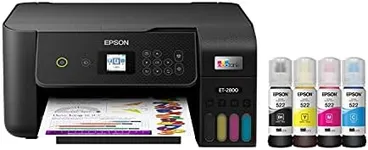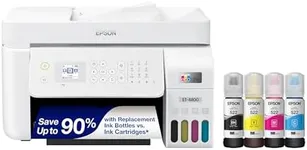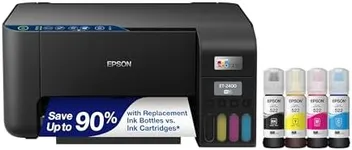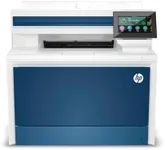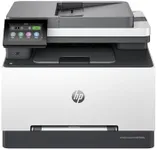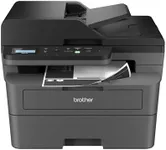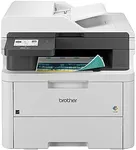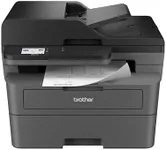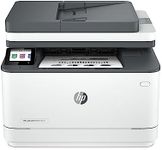Buying Guide for the Best Printers For Small Businesses
Choosing the right printer for your small business is crucial as it can impact your productivity and efficiency. When selecting a printer, consider the volume of printing, the types of documents you need to print, and any additional features that might benefit your business operations. Understanding the key specifications will help you make an informed decision that aligns with your business needs.Print SpeedPrint speed, measured in pages per minute (PPM), indicates how quickly a printer can produce documents. This is important for businesses with high printing demands. Printers with speeds of 20-30 PPM are suitable for moderate use, while those with speeds above 30 PPM are ideal for high-volume printing. If your business requires frequent printing of large documents, a higher PPM will save time and increase productivity.
Print QualityPrint quality is measured in dots per inch (DPI) and determines the clarity and detail of printed documents. Higher DPI values, such as 1200 DPI or more, are essential for businesses that need to produce high-quality marketing materials or detailed images. For standard text documents, a lower DPI, such as 600 DPI, is usually sufficient. Consider the nature of your business documents to choose the appropriate print quality.
Paper HandlingPaper handling refers to the types and sizes of paper a printer can accommodate, as well as its paper tray capacity. This is important for businesses that print on various media, such as envelopes, labels, or cardstock. A printer with multiple paper trays and a higher capacity (e.g., 250 sheets or more) can reduce the frequency of paper refills and support diverse printing needs. Assess your typical print jobs to determine the necessary paper handling features.
Connectivity OptionsConnectivity options include USB, Ethernet, Wi-Fi, and mobile printing capabilities. These options are crucial for ensuring that all employees can easily access the printer. Wi-Fi and mobile printing are particularly useful for businesses with remote or mobile workers. Ethernet connections provide stable and fast network printing for office environments. Choose a printer with connectivity options that match your business's workflow and infrastructure.
Duplex PrintingDuplex printing allows a printer to automatically print on both sides of a sheet of paper. This feature is important for businesses looking to save on paper costs and reduce their environmental footprint. If your business frequently prints double-sided documents, such as reports or booklets, a printer with automatic duplexing will be highly beneficial. For occasional double-sided printing, manual duplexing may suffice.
Monthly Duty CycleThe monthly duty cycle is the maximum number of pages a printer can handle in a month without experiencing wear and tear. This is crucial for ensuring the longevity and reliability of the printer. For small businesses with moderate printing needs, a duty cycle of 5,000 to 10,000 pages is typically adequate. For higher volume printing, look for a duty cycle of 20,000 pages or more. Match the duty cycle to your expected monthly print volume to avoid overworking the printer.
Cost of ConsumablesThe cost of consumables includes ink or toner cartridges, paper, and maintenance kits. This is an important consideration for managing ongoing expenses. Laser printers generally have higher upfront costs but lower per-page costs, making them suitable for high-volume printing. Inkjet printers may have lower initial costs but higher per-page costs. Evaluate the cost and availability of consumables for the printer models you are considering to ensure they fit within your budget and usage patterns.
Additional FeaturesAdditional features such as scanning, copying, faxing, and security options can add significant value to a printer. Multifunction printers (MFPs) that include these features can save space and reduce the need for multiple devices. Security features like user authentication and data encryption are important for protecting sensitive business information. Consider the specific needs of your business operations to determine which additional features are necessary.

